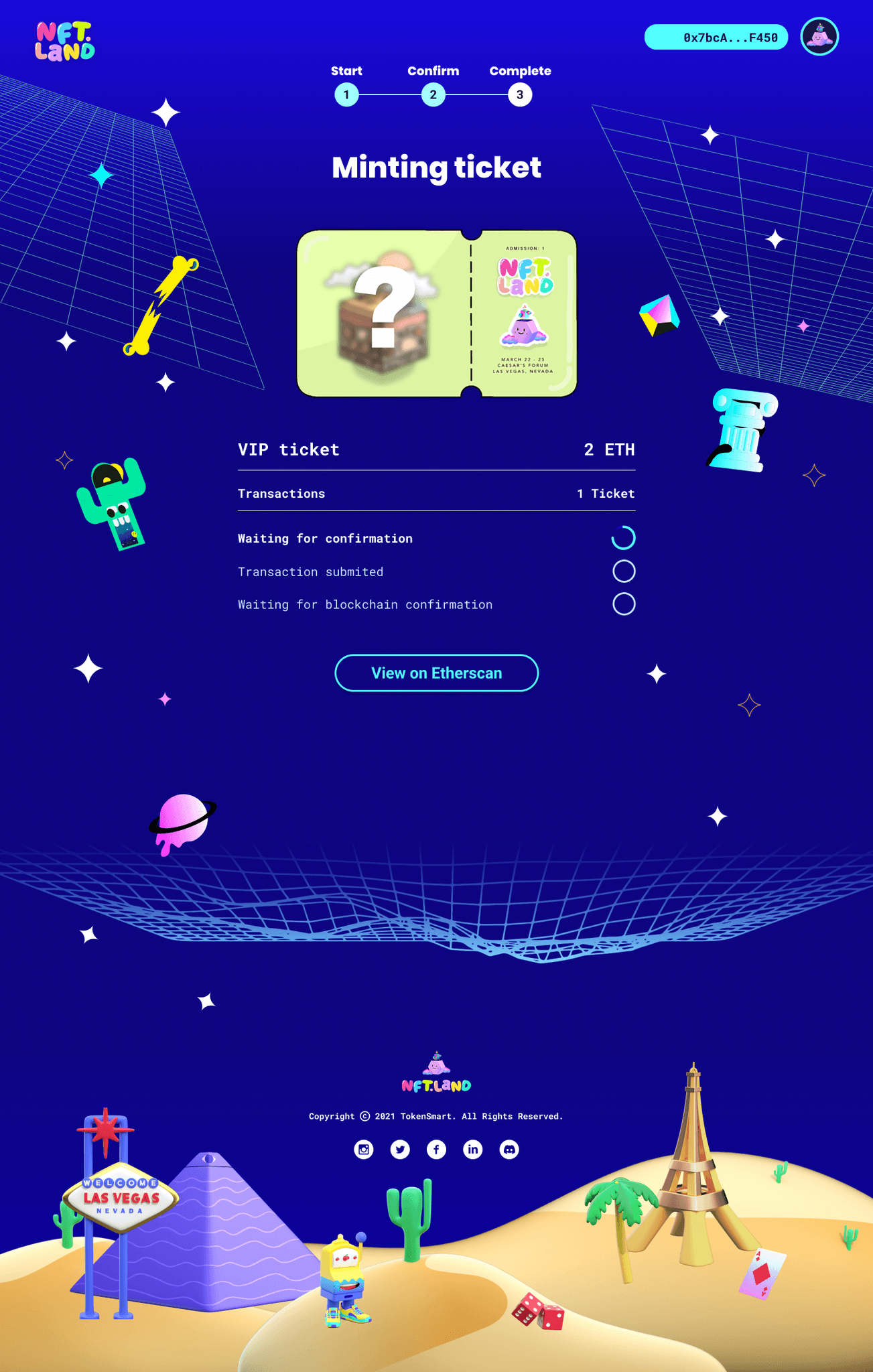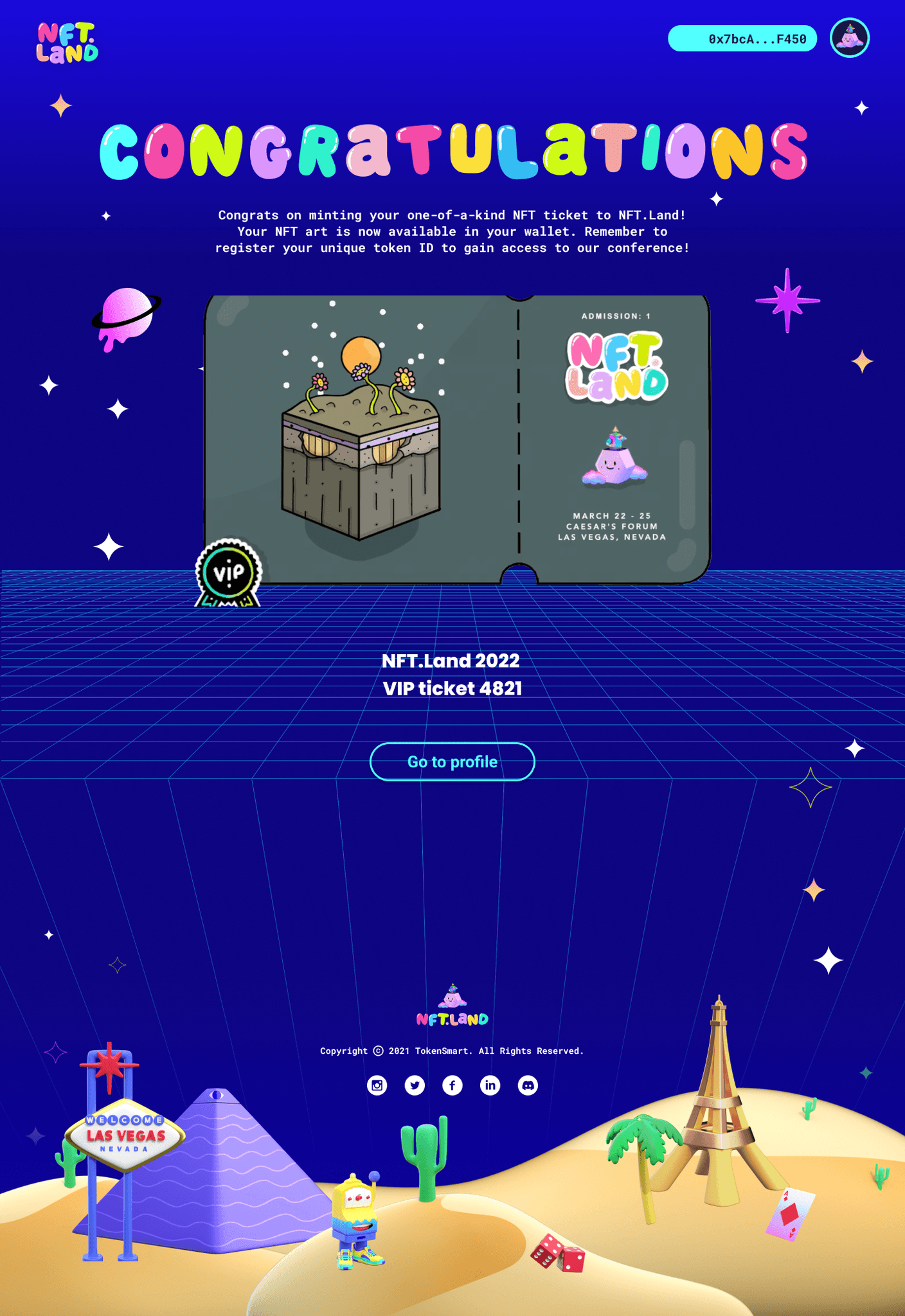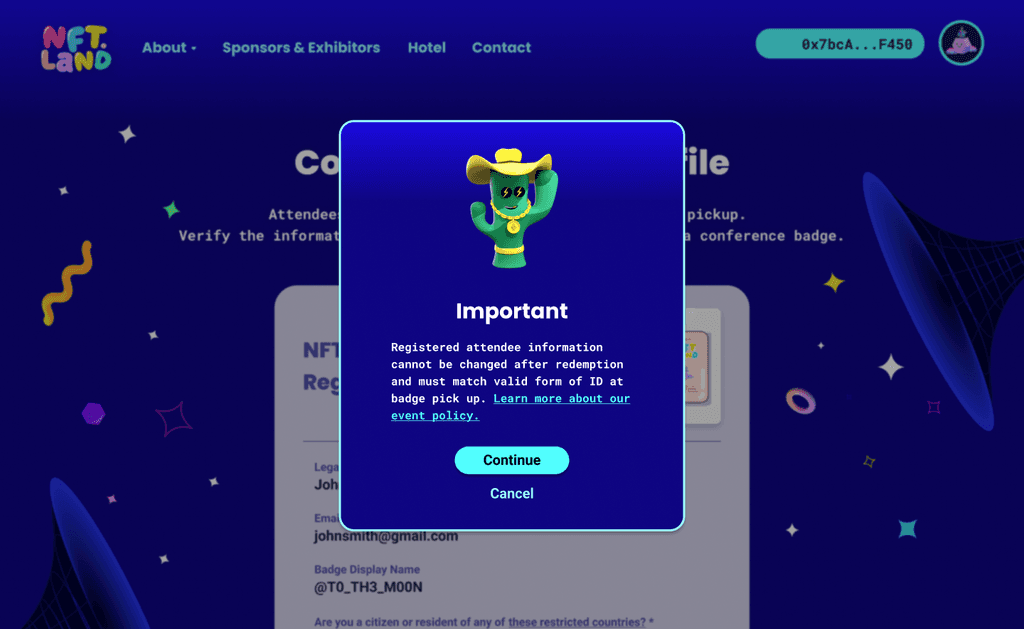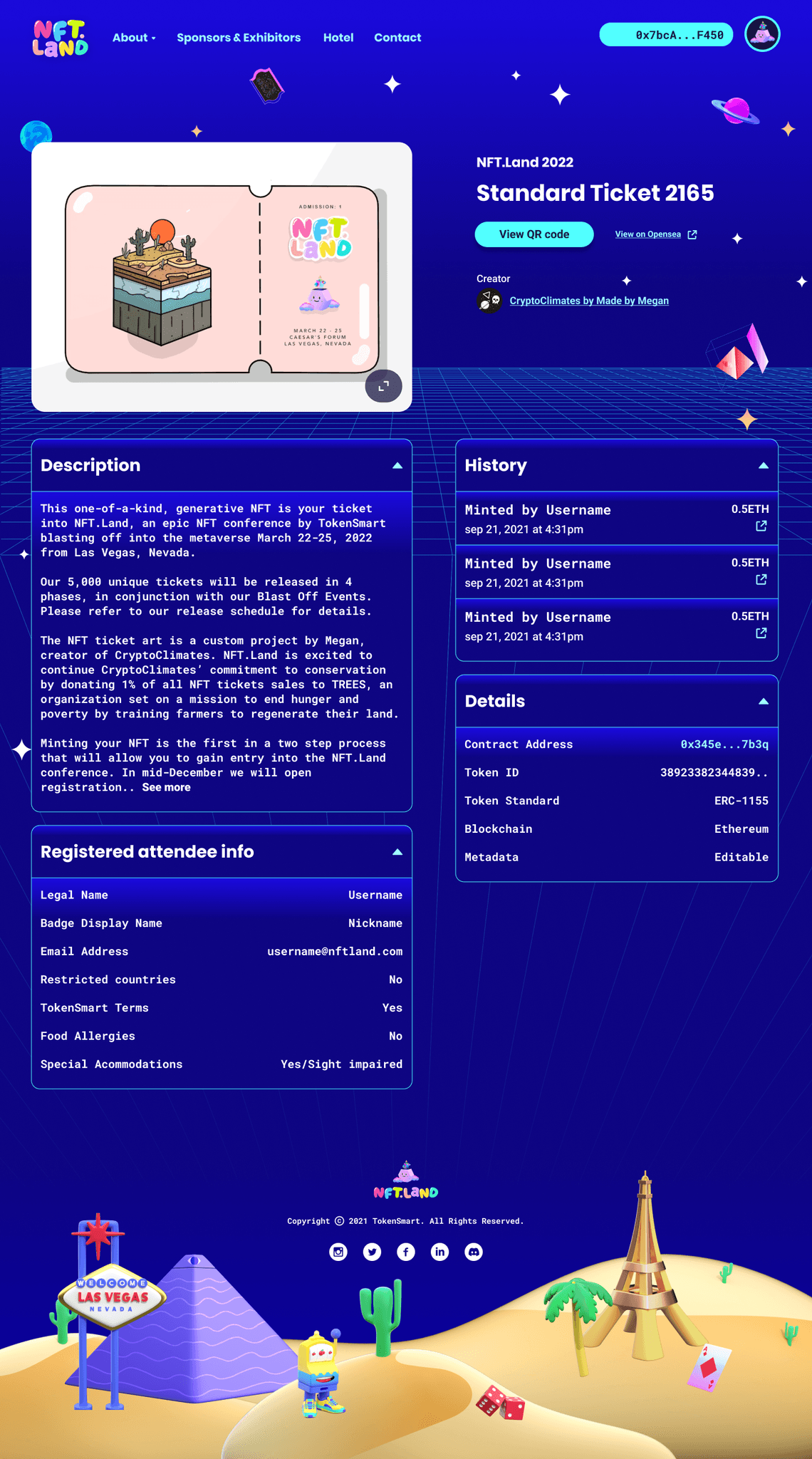NFT.Land
Tokenizing live events
Role
ux/ui designer
experience designer
timeline
jul ‘21 - mar ‘22
Team
event team,
marketing,
Way Too Digital
The problem
How can we tokenize live events and create value in the web3 community?
With the rise of NFTs and the introduction of tokenized utility, how could we bridge the gap between web2 and web3?
Web3 became more than memecoins and cryptocurrency. It became a community, and in some cases, a country club of degens. Despite web3 being synonymous with anonymity and being strictly virtual in the metaverse, there was a need in the industry to bridge the gap and meet IRL.
Solution
a tokenized conference centered around NFT projects, web3 products, and networking events.
This presented an opportunity for the NFT community to come together, network, and share exciting projects with one another. This would be the first of its kind so we wanted to show the world how NFTs and blockchain technology can be utilized in Web2, ultimately bridging the gap between “jpegs” and real world usability.
How it started
Creative direction
When I joined the project as a UX/UI and Event Designer, there was a visual direction set by the creative director, which was inspired by The Amazing World of Gumball and its mixture of textures and surreal vibe. We wanted to embody the metaverse and the digital landscape.
Independent contractors
There were a solid group of independent contractors who designed different elements of the branding. From illustrators to front end devs, this team created the artwork that was utilized throughout the site.
“blast off into the metaverse”
With Facebook rebranding as Meta and the growing interest in the “metaverse”, the event team and leadership agreed on “Blast Off into the Metaverse” as the theme.
Brand direction by creative director
Tokenizing live events
nft tickets
Houston we got a problem... it’s never been done before
Creating the NFT minting site wasn’t the biggest challenge. One of the challenges of this project was:
How are we going to create event tickets out of an instantly traded asset?
This was a challenge because NFTs can be bought or sold at any moment so we had to solve the possible problem of having duplicate entries per NFT token when the event started.
Bridging the gap between web2 and web3
The event team and I determined that online registration was the best way to convert NFT ownership into event passes. Luckily with the transparency of blockchain transactions, we were able to view all NFT ticket transactions which allowed us to set rules on ticket registration. Specifically, NFT.Land NFTs were not allowed to be traded if it has been registered and NFT ownership was verified using Etherscan during ticket redemption at the event.
nft art by
Madebymegan / Cryptoclimates
Generative art via smart contracts
We wanted to utilize generative art akin to blue chip projects and other PFP (profile picture) NFT projects. The randomized and layered traits affect the NFT’s rarity scores. The goal was for tickets to provide value to the attendees that can be traded and collected for future events with perks. Thus, adding value to its utility.
Cross-functional & cross-continent collaboration
To bring our ideas to life, we worked with Way Too Digital, a web3 dev agency, to develop the minting site. I worked closely with their wonderful team to create an intuitive experience in minting/purchasing, registering, and redeeming the tickets.
Art by cryptoclimates
The artist behind CryptoClimates, MadebyMegan, collaborated with NFT.Land to create unique layers for the generative ticket. Way Too Digital utilized Avastars’ smart contract to compile these layers with a randomized algorithm to ultimately create the final minted token.
The process
from .jpg to event pass
Step 1 : Mint/Purchase ticket
Purchasing a ticket via blockchain transaction, aka “Minting a token”

Ticket mint user flow
We used Avastars’ smart contract to create generative art on the blockchain. This contract allowed a randomized layering of the artwork, which counts to the NFT’s rarity score. We used this particular smart contract because in addition its trait layering capability, it allowed backend access to adding or tweaking traits for users to customize and evolve their NFT.
This is where Way Too Digital came in. They had engineers who took Avastars’ smart contract and Megan’s artwork to create the backend infrastructure to make it happen.
Ticket mint wireframes

final design (mobile)

final design (desktop)
Step 2 : Registration
registering ticket for event entry
In order to attend the conference in Las Vegas, users need to register an unique NFT token ID and assign an attendee profile.
Ticket registration user flow

Ticket registration wireframes

final designs (desktop)

Step 3 : Redemption
redeem nft for event entry
Event attendees will check in at a booth to verify registered profile at Caesar’s Forum and get their event pass. Due to the transitory and instant trading of NFTs, we opted to open event registration 7 days prior to the event day. Attendees were required to hold the NFT in their wallet when attending.
ticket redemption user flow

Ticket registration wireframes

final designs (desktop)
Then there’s the actual ticketing experience IRL.
NFTs can be instantly traded at any time so in order to prevent redundant event entries per NFT token, attendees were required to register up to 7 days prior event day. They were also required to hold the registered NFT in their wallet of choice when attending. This was a safeguard put in place so that the only NFT holders can enter the exclusive event.
badge pick up flow (at event / irl)

Final Thoughts
COVID-19
event cancellation
Unfortunately, when January 2022 came, COVID was still a major concern for all big conferences and events.
Ultimately, leadership decided to pull the plug on the event. It was disappointing, but that’s start-up life.
Coachella nfts
Setting the precedent
Remember when Coachella came out with their NFT keys?
Unfortunately they hosted their smart contract on FTX, which went under in 2023. This epic scandal fueled the public's disdain for NFTs and crypto, with Coachella Key holders left in the desert dust with no valid form of authenticating their ownership or purchase. Despite the bad PR, this demonstrated that there is a market for tokenized utility and adds to the pioneering case studies of incorporating blockchain tokens with live events.

























